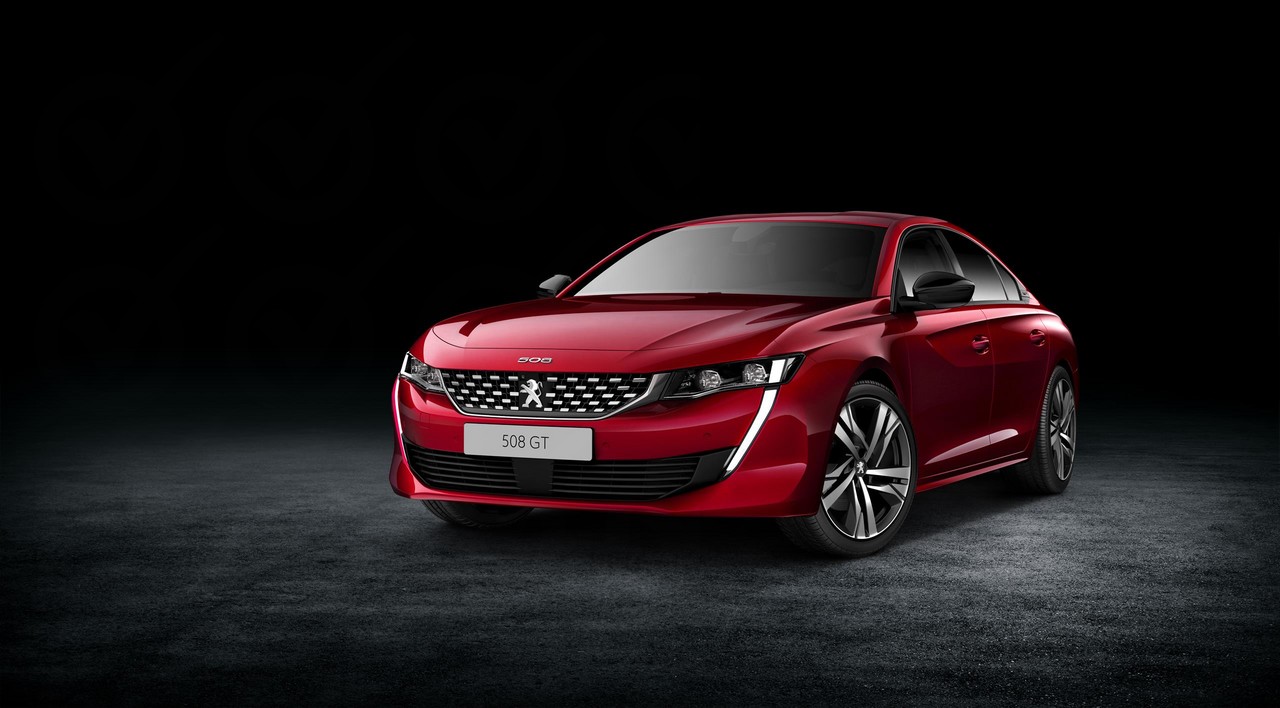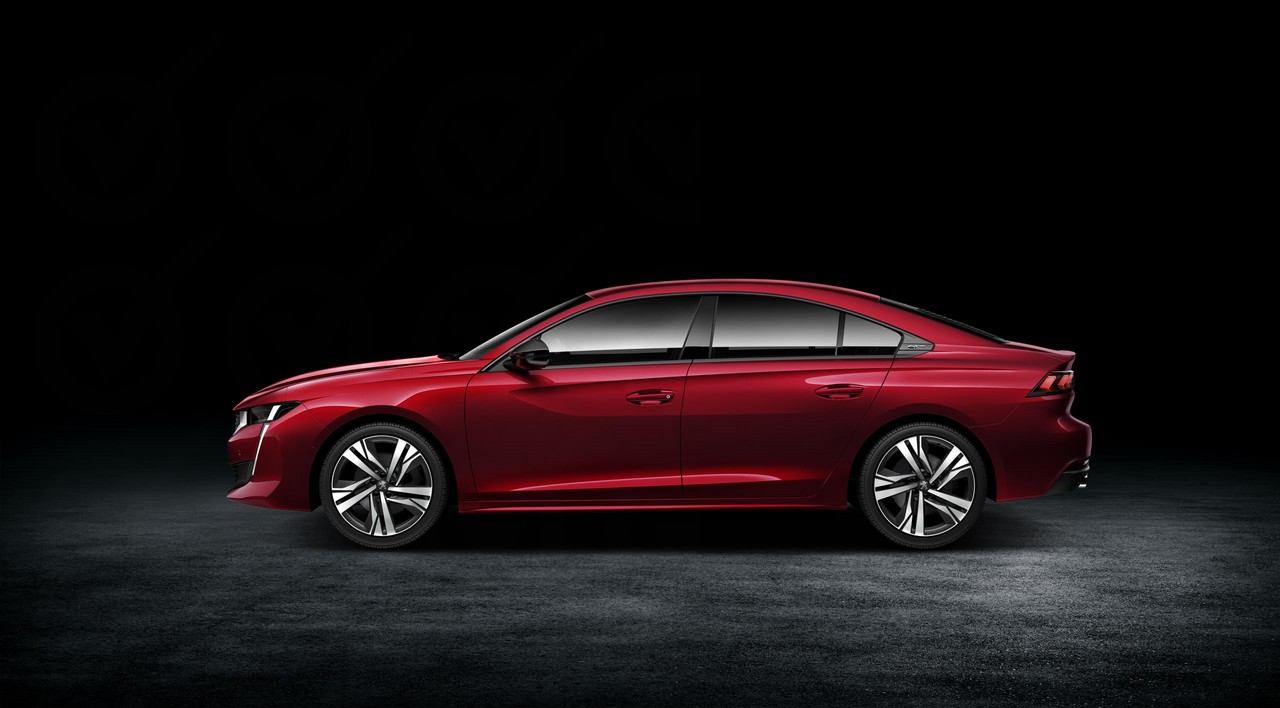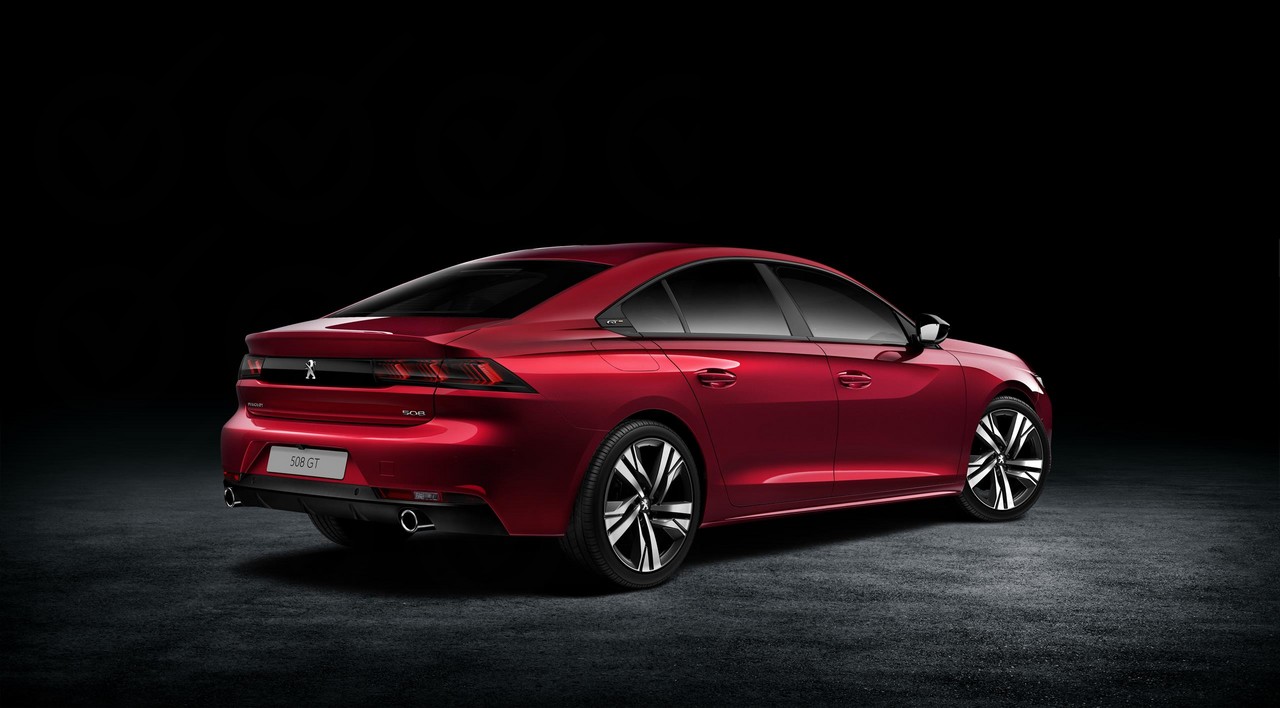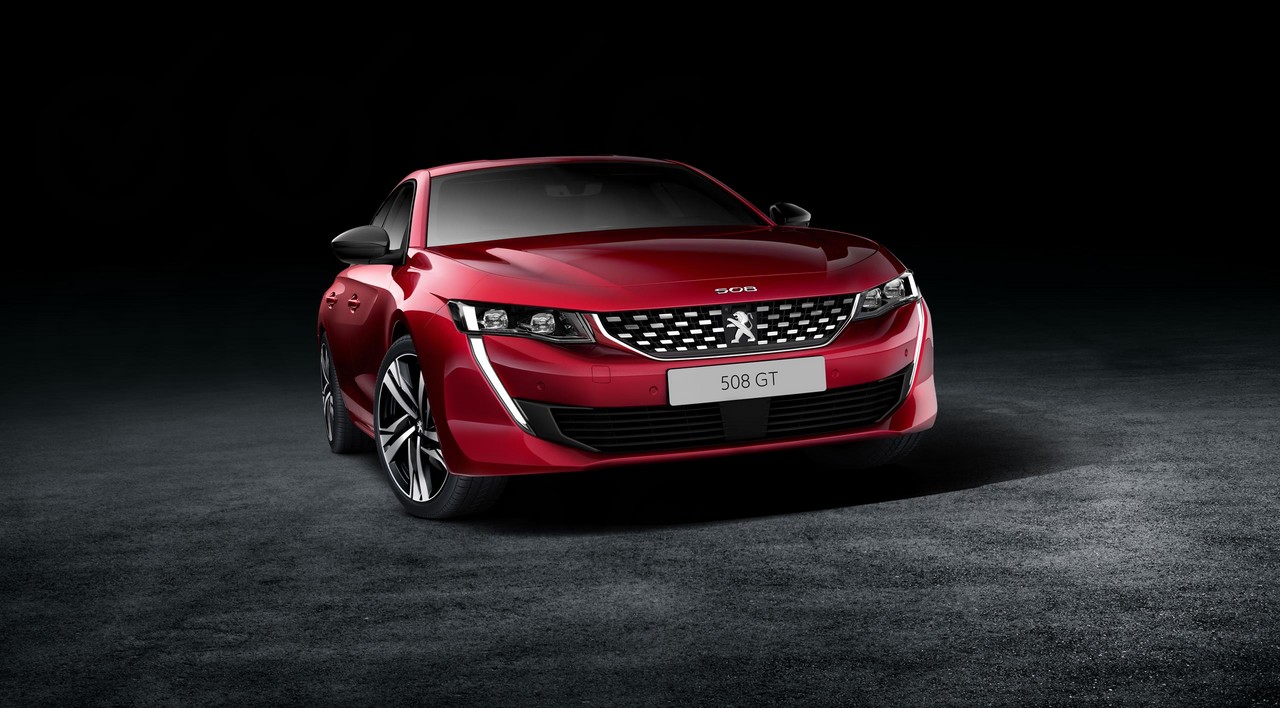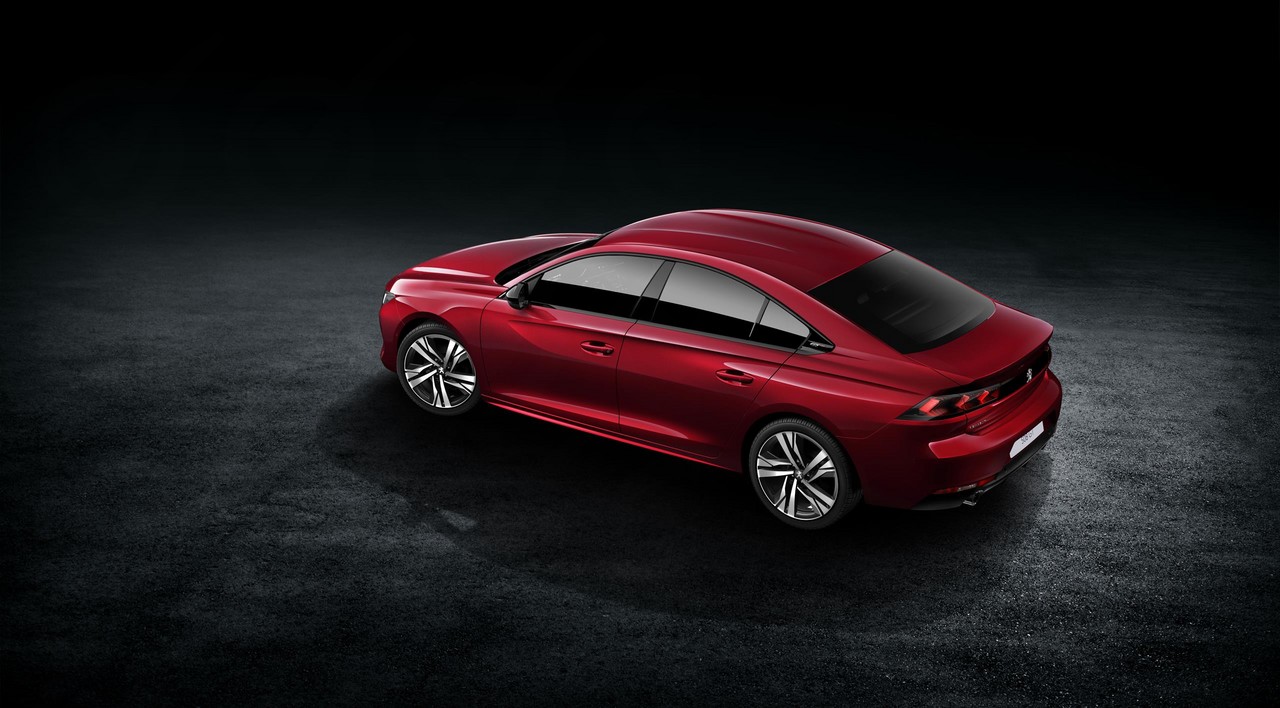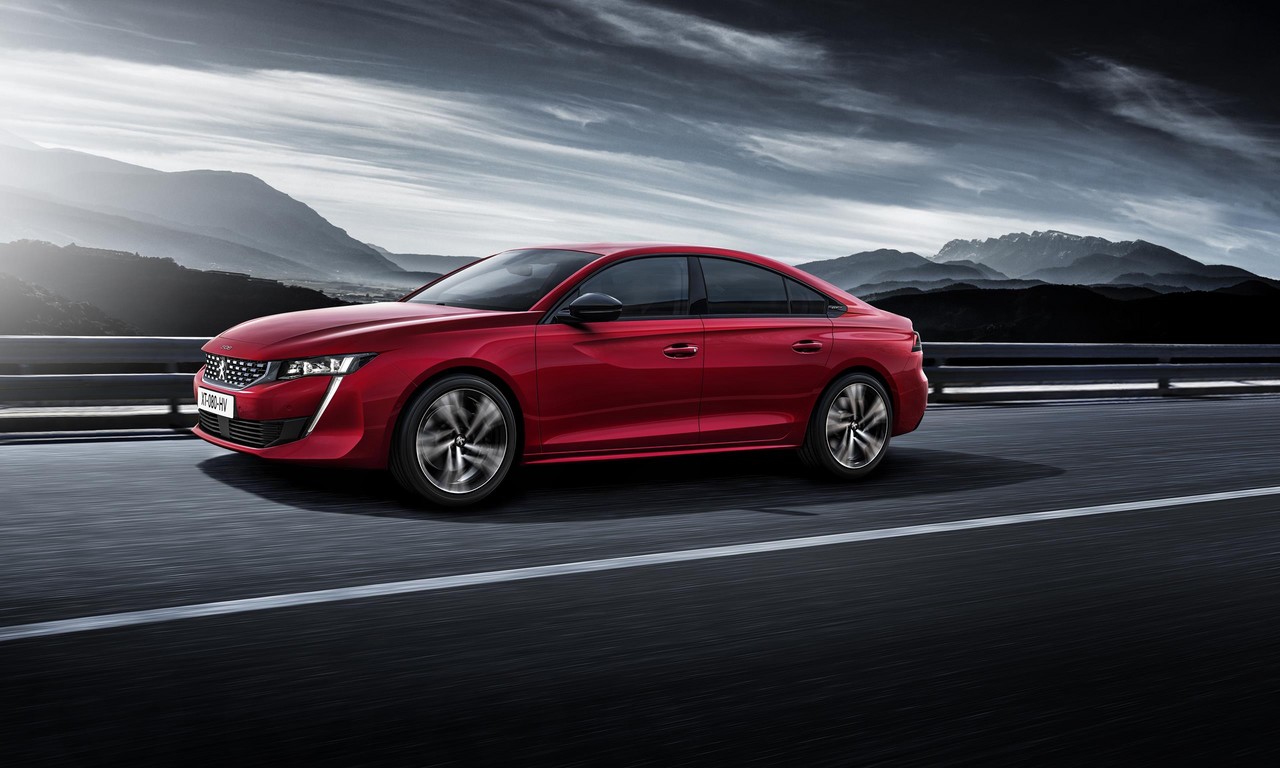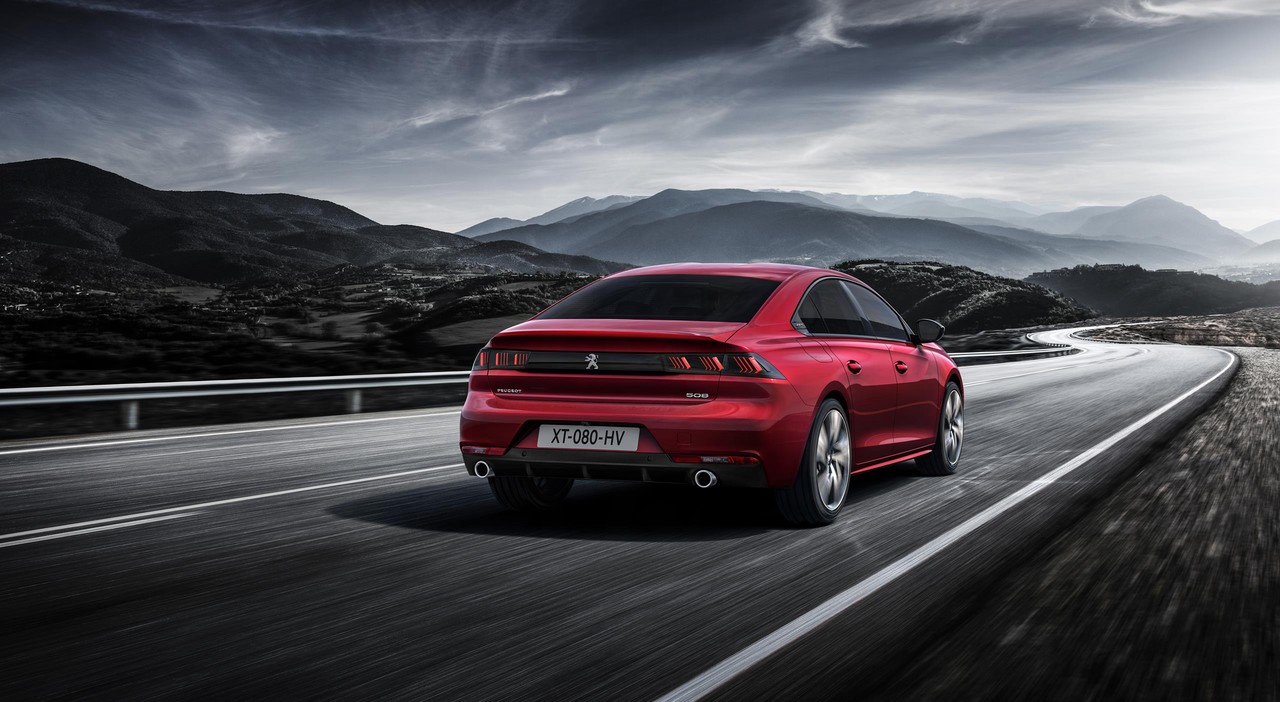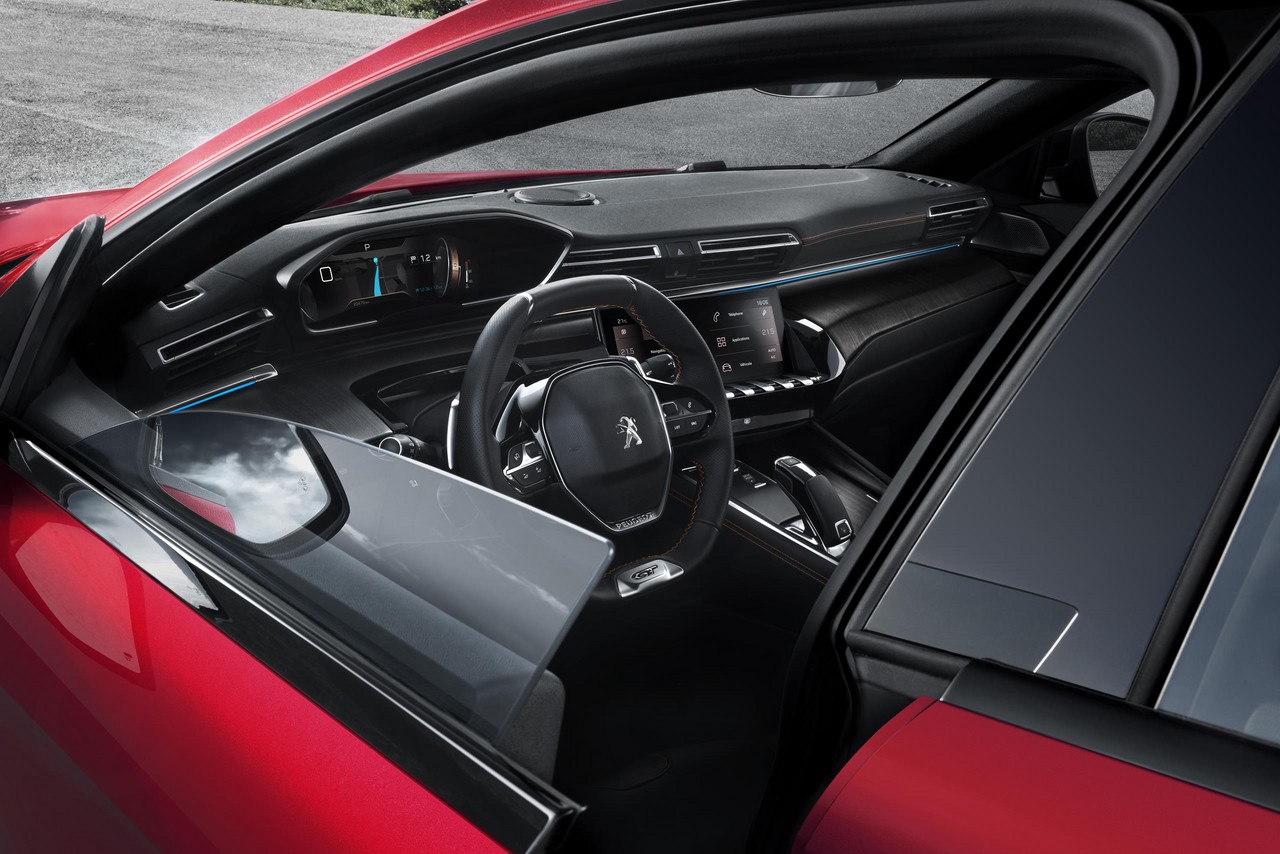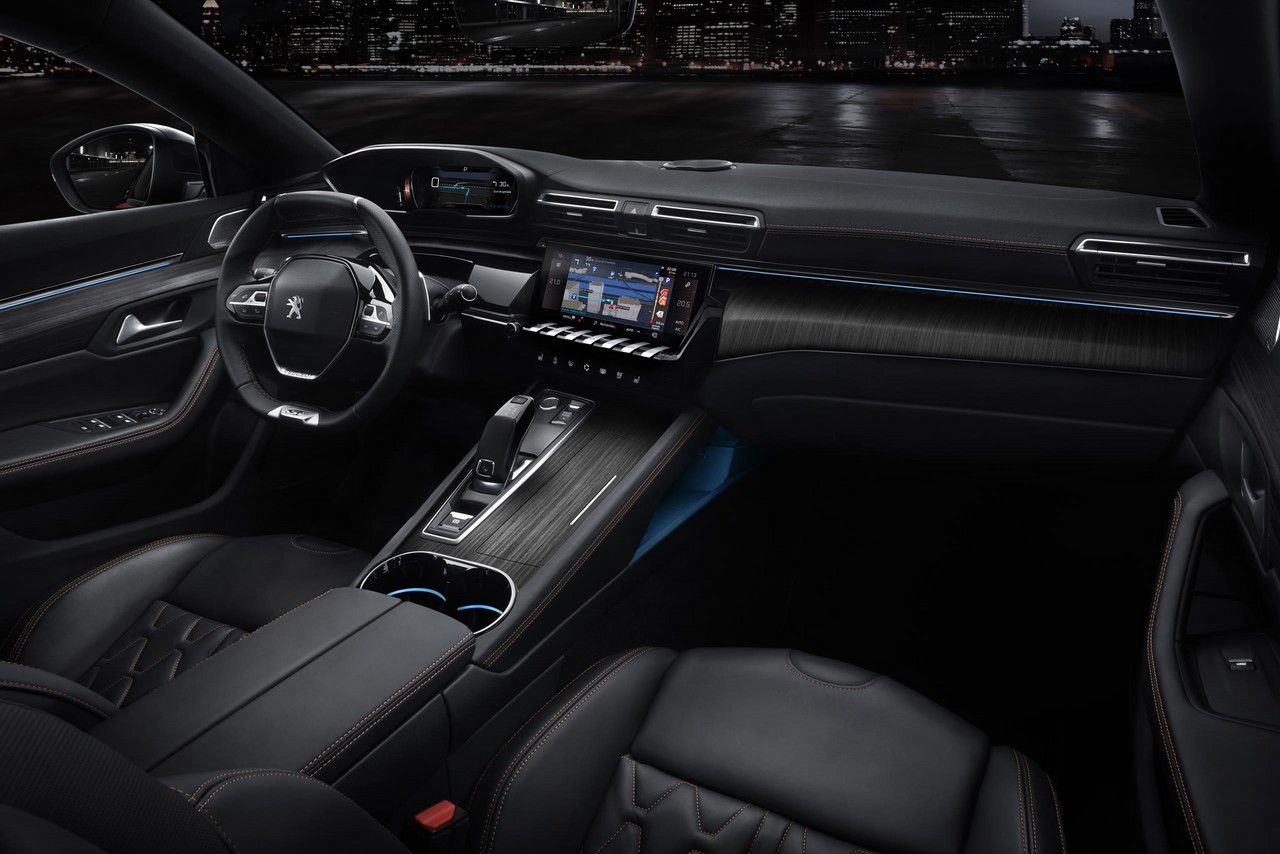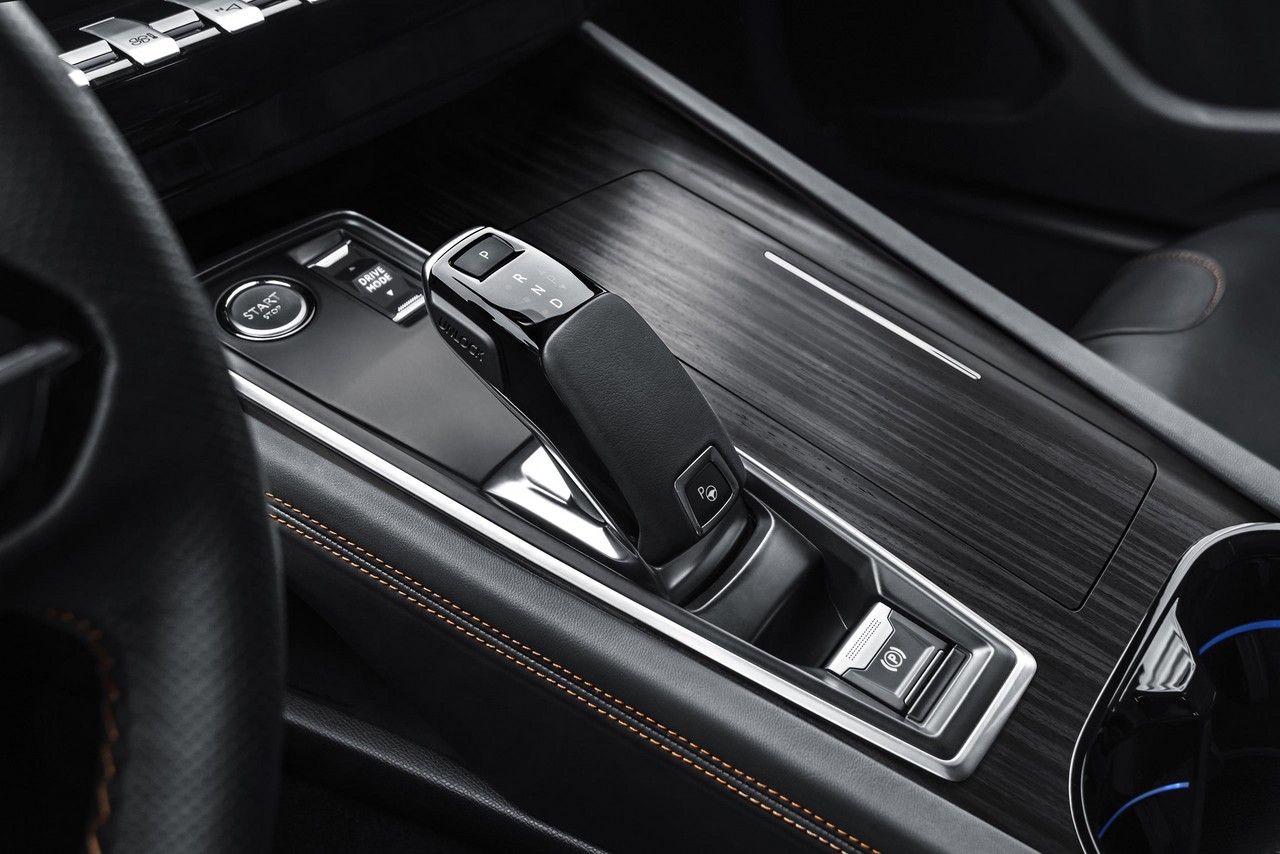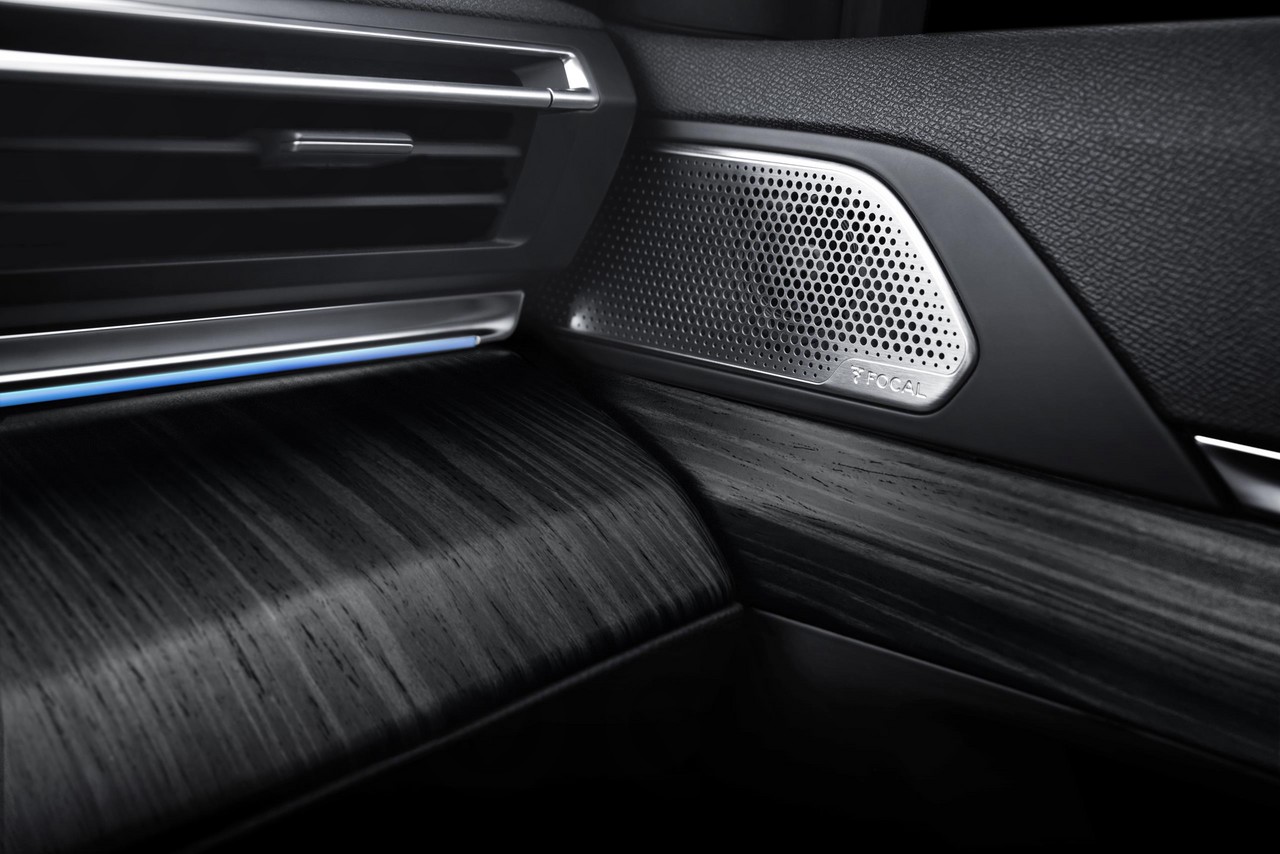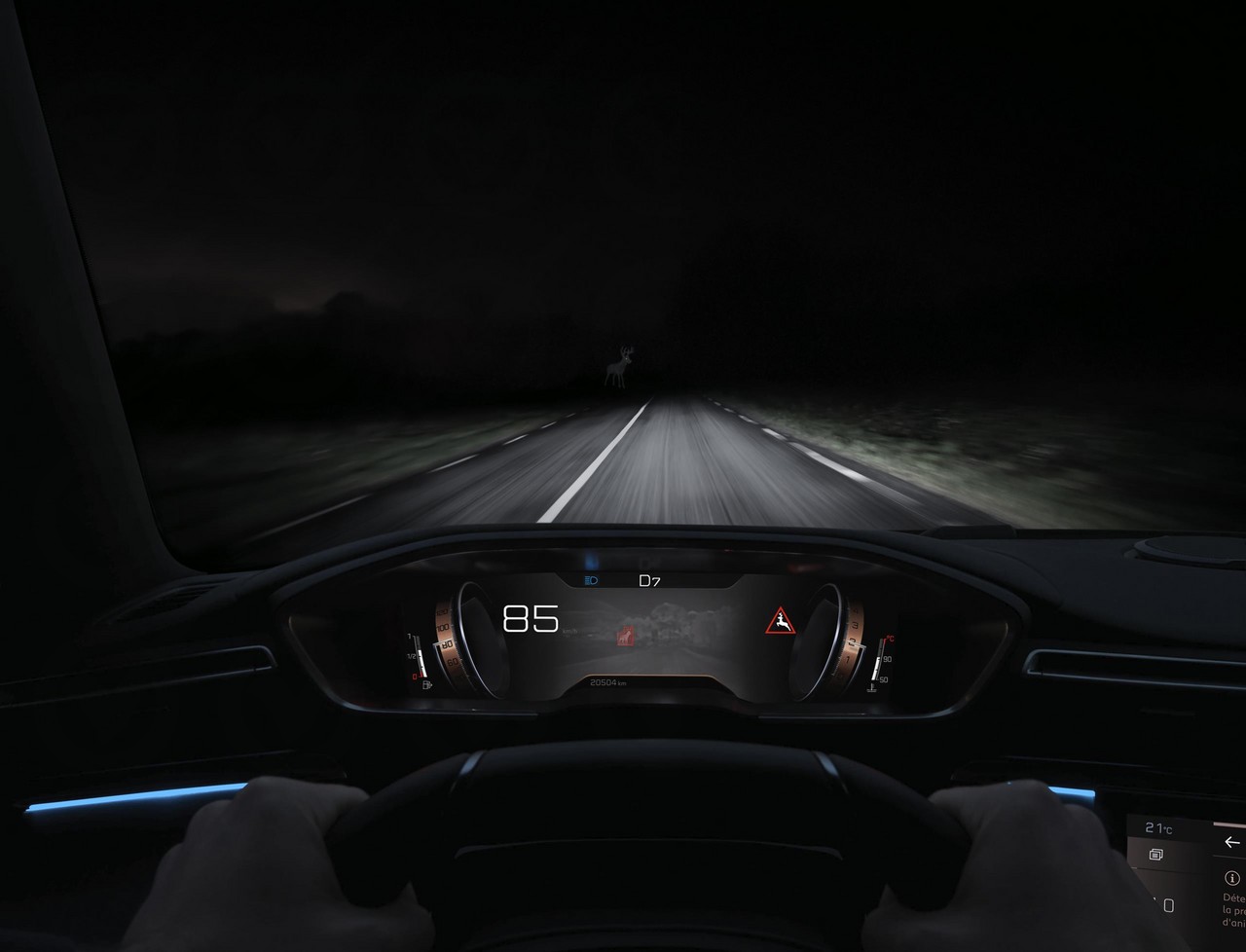
- Willing 1.6-litre turbocharged petrol engine
- Refined eight-speed automatic transmission
- For 508 GT, full-grain Nappa leather upholstery
- Good body control and generally comfortable ride…
- … though road surface imperfections are noticed at lower speeds
- In city driving, light steering lacks feel
- For 508 Fastback, poor rear head and knee room
- For 508 Fastback, rivals have bigger boots
- Prevalence of glossy black plastic and harder plastic mouldings
- Extendable seat cushions create a gap beneath the thighs
- Peugeot’s ‘i-Cockpit’ won’t suit all driving positions
Overview
Released in Australia in August 2019, the Peugeot R83 508 was available as a mid-size liftback (‘Fastback’) or wagon (‘Sportswagon’). Manufactured in Mulhouse, France, the front-wheel drive Peugeot R83 508 was powered by 1.6-litre turbocharged petrol engines that were mated to eight-speed automatic transmissions. For Australia, the Peugeot 508 range consisted solely of GT editions.
To reduce fuel consumption, the 1.6-litre ‘PureTech’ engines had a ‘Start&Stop’ function that enabled them to shut down when the vehicle was stationary in traffic. Over the combined ADR 81/02 test cycle, fuel consumption for the Peugeot R83 508 1.6T was 6.3 litres per 100 km.
The Peugeot R83 508 was sold with a five-year, unlimited kilometre warranty and five years of roadside assistance.
| Variant | Engine | Trans. | Peak power | Peak torque |
|---|---|---|---|---|
| PureTech 225 S&S (GT) | 1598 cc EP6FADTX turbo petrol I4 | 8sp auto | 165 kW at 5500 rpm | 300 Nm at 2750 rpm |
Body and dimensions
Underpinned by PSA Group’s EMP2 platform, the body of the Peugeot R83 508 featured a ‘new’ body-welding technique, 24 metres of structural adhesive, hot metal stamping, aluminium for the front wings and boot, and a thermoplastic tailgate. Compared to the Peugeot W2 508 ,
- The A-pillars were moved rearwards to provide a longer bonnet;
- The frameless doors enabled the height of the vehicle to be reduced. For the frameless doors, Peugeot selected SaarGummi for the seals and Inteva for window control. Window glazing was also thickened by 1 mm; and,
- The body of the R83 508 was narrower at the front than at the rear to improve aerodynamics. As such, the R83 508 Fastback had a drag co-efficient of 0.26 Cd.
The Peugeot R83 508 Fastback and 508 Sportswagon had unladen weights of 1385 kg and 1395 kg, respectively. According to Peugeot, the R83 508 was around 70 kg lighter than the Peugeot W2 508 for comparable variants.
Compared to the Peugeot W2 508 , the Peugeot R8 508 Fastback was 42 mm shorter (at 4750 mm), 6 mm narrower (1847 mm), 52 mm lower (1404 mm) and had a 24 mm shorter wheelbase (2793 mm); luggage capacity was 487 litres with the rear seats up. Relative to the 508 Fastback, however, the Peugeot R83 508 Sportswagon was 40 mm longer (at 4790 mm), 10 mm taller (1420 mm) and had a luggage capacity of 530 litres.
Design cues for the Peugeot R83 508 included its radiator grille with chrome-plated ‘chequerboard’ elements and central Peugeot lion, full LED headlights, opalescent LED daytime running lights with a vertical visual signature, frameless doors and LED ‘claw-effect’ rear lights.
Suspension and steering
The Peugeot R83 508 had MacPherson strut front suspension and multi-link rear suspension. For 508 PureTech variants and GT editions, Peugeot’s ‘Active Suspension Control’ (i.e. electronically-controlled dampers) was fitted as standard and enabled the driver to select from five different modes.
The Peugeot R83 508 had rack-and-pinion steering with electric power assistance.
Safety equipment
Standard safety equipment for the Peugeot R83 508 GT included dual front airbags, front seat-mounted side airbags, full-length curtain airbags (i.e. for front and rear occupants), ABS, electronic brake force distribution, brake assist, electronic stability control, traction control and front seatbelts with pre-tensioners and load limiters.
As standard, the Peugeot 508 GT was equipped with the following active safety technologies –
- Active Safety Brake: applied the brakes automatically – without any action from a driver – to avoid a collision or reduce vehicle speed if a collision was anticipated. Active Safety Brake could detect moving vehicles when the Peugeot 508 is driving at speeds between 5 km/h and 140 km/h, stationary vehicles from speeds of less than 80 km/h and pedestrians from speeds of less than 60 km/h. Prior to autonomous emergency braking, the driver receives audible and visual warnings (‘Distance Alert’);
- Adaptive Cruise Control with stop function: operating at speeds between 30 km/h and 180 km/h, Adaptive Cruise Control used a radar sensor – mounted in the front bumper – which had a range of 150 metres to monitor traffic ahead. Adaptive Cruise Control could maintain the speed set by the driver and automatically apply the brakes to maintain a safe following distance, or maintain a pre-set distance from the vehicle ahead (with selectable distant, normal and close settings);
- Lane Departure Warning (LDW): operating at speeds over 80 km/h, LDW used a camera to detect continuous or broken road lines. If the Peugeot 508 crossed these lines without the turn indicators having been activated, visual and audible warnings were issued;
- Active Lane Departure Warning (ALDW): operating at speeds between 65 km/h and 180 km/h, ALDW corrected the vehicle’s course by progressively applying steering lock if it determined that the vehicle was likely to depart from its lane. The corrective steering, however, could be over-ridden by holding the steering wheel firmly or by activating a turn indicator;
- Active Blind-spot Monitoring: operating at speeds between 12 km/h and 140 km/h, Active Blind-spot Monitoring could warn the driver if a vehicle was in their blind spot by illuminating a lamp in the relevant door mirror. Furthermore, corrective steering was initiated if the Peugeot 508 crossed a lane marking when there was a vehicle in the blind spot;
- Driver Attention Alert: uses a camera mounted at the top of the windscreen to monitor the driver’s alertness by analysing deviations from the path between road markings. If deviations are detected, audible and visual warnings are issued. Furthermore, a ‘Drive Time Warning’ function sounds a warning chime if the vehicle has been driven at speeds above 65 km/h for more than two hours continuously;
- Speed limit recognition and recommendation: used a camera fitted at the top of the windscreen to detect and read speed limit and de-restriction signs, but could also use speed limit information from the navigation system. This information was then displayed in the digital instrument panel; and,
- High Beam Assist: automatically switched between high beam and low beam depending on lighting conditions and oncoming traffic to avoid dazzling other drivers.
Euro NCAP: 2018 Peugeot R83 508
In Euro NCAP testing , the 2018 Peugeot R83 508 received a five star safety rating which included a 96 per cent adult occupant protection rating and an 86 per cent child occupant protection rating. In the frontal offset test, protection of the driver’s head, thighs and feet were rated as good, although chest and lower leg protection was rated as adequate (i.e. a slight risk of serious injury). Maximum points, however, were awarded in the side impact and pole tests.
Wheels, tyres and brakes
The Peugeot R83 508 had 8.0J x 18-inch ‘Sperone’ two-tone diamond-cut alloy wheels with 235/45 R18 tyres. Furthermore, the R83 508 had 304 mm by 28 mm ventilated front brake discs and 268 mm by 12 mm solid rear discs.
Features: Peugeot R83 508 GT
Inside, Peugeot’s ‘i-Cockpit’ for the 508 GT consisted of the following elements:
- A compact, full grain leather trimmed steering wheel;
- A ten-inch capacitive touchscreen that is angled towards the driver; and,
- A 12.3-inch digital instrument panel that is positioned above the steering wheel.
The infotainment system for the Peugeot R83 508 GT consisted of a ten-speaker ‘Focal’ audio system with amplifier and subwoofer, digital radio tuner (DAB), navigation system, Bluetooth mobile phone connectivity, smartphone integration (Apple CarPlay, Android Auto and Mirrorlink), smartphone induction charging plate, four USB sockets (two front and two rear), voice recognition and two 12 volt power sockets (dashboard and load area).
Beyond this, the Peugeot 508 GT was also equipped with dual-zone climate control air conditioning, full grain Nappa leather seat trim, eight-way power adjustable front seats with heating and massage functions, full LED headlights, LED daytime running lights, dusk-sensing headlights, rain-sensing wipers, front and rear parking sensors, a reversing camera, 1/3 to 2/3 folding rear seats, remote central locking with proximity key, power adjustable and heated door mirrors with folding function and auto dipping on reverse, power windows, a power adjustable steering wheel (for reach and rake), height adjustable front seats, front seat memory settings, push-button start, an electric parking brake, electrochromatic door and rear view mirrors, illuminated vanity mirrors, blue ambient lighting, rear privacy glass, a trip computer and an immobiliser. The 508 GT Sportswagon added a rear partition net for the cargo area and roof rails.
Finally, the Peugeot 508 GT was also equipped with –
- Peugeot’s ‘City Park’: could identify parking spaces and provide automated steering for right angle and parallel parking manoeuvres;
- A 360 degree surround camera system; and,
- Peugeot’s ‘Magic Wash’ windscreen wipers: used jets mounted above the wiper blades to distribute the screenwash in front of the blade.
Brochure
